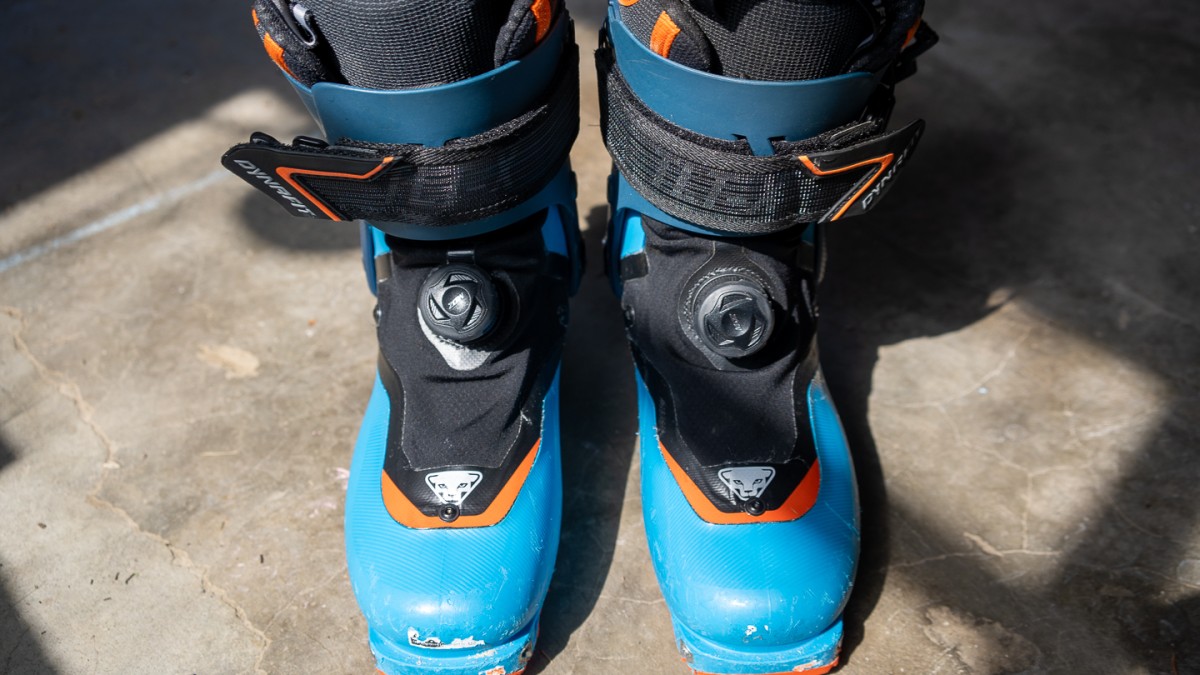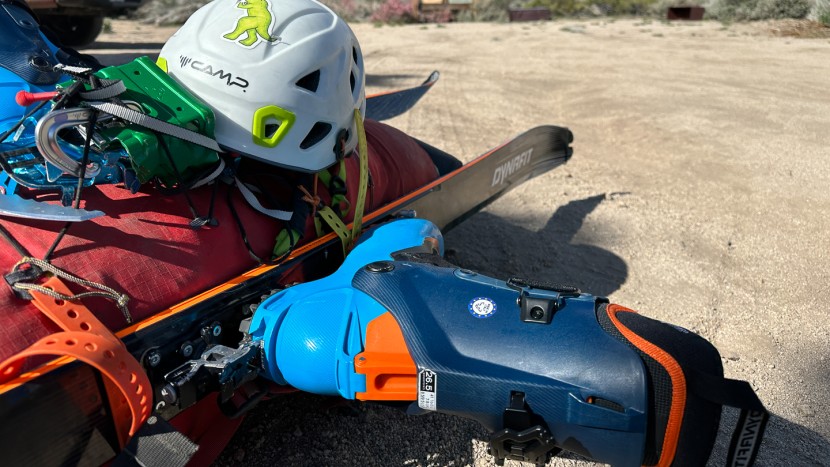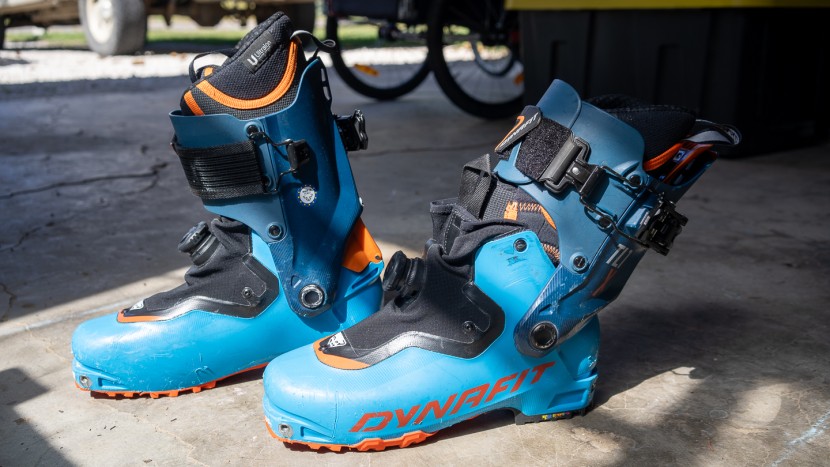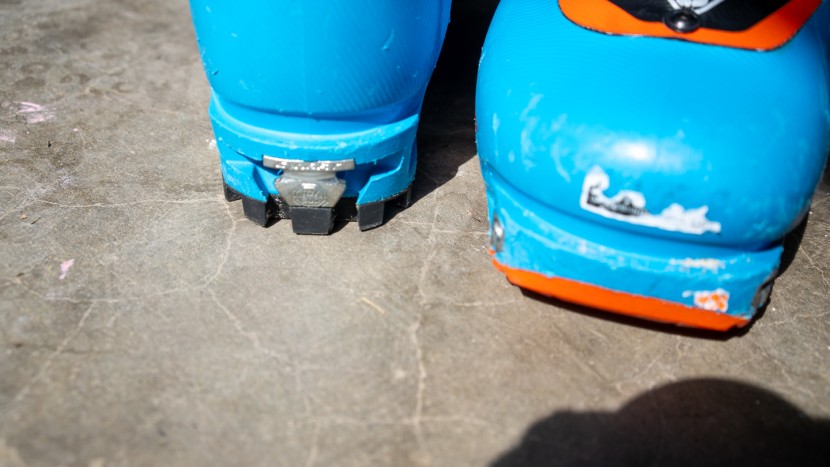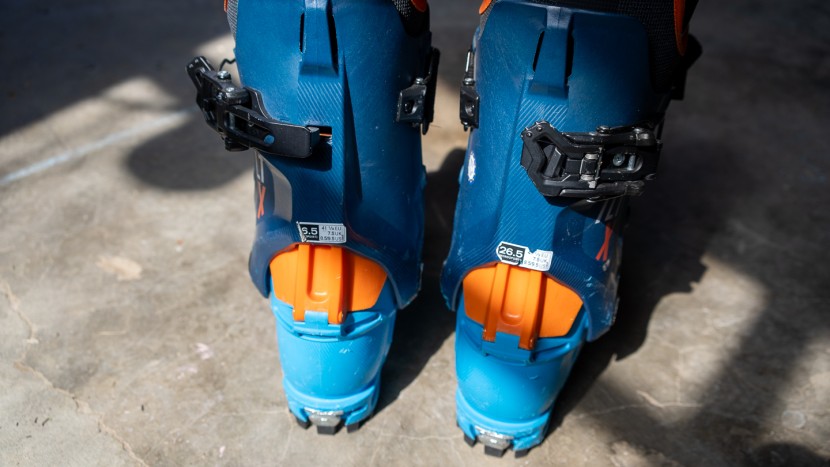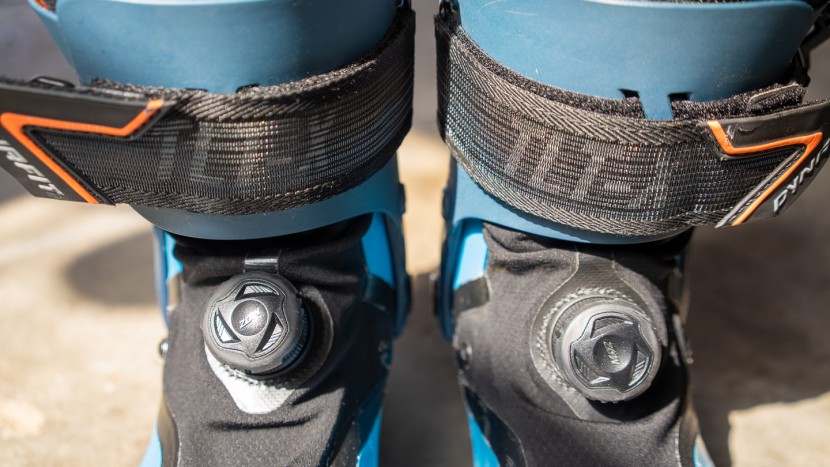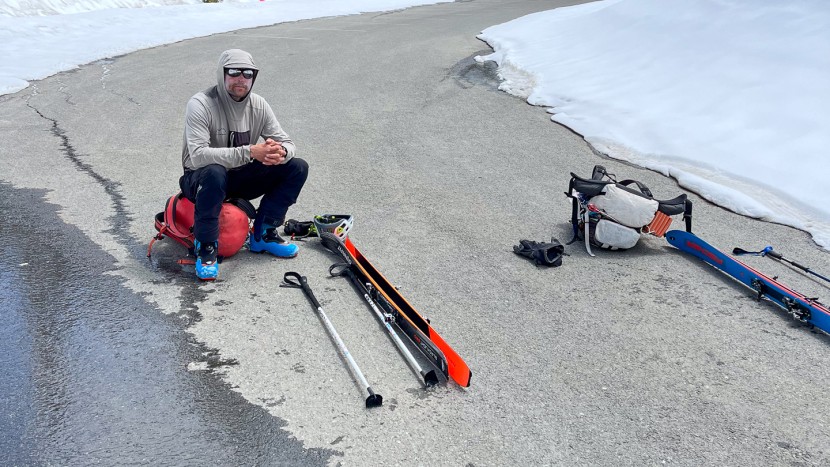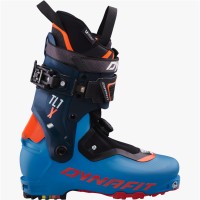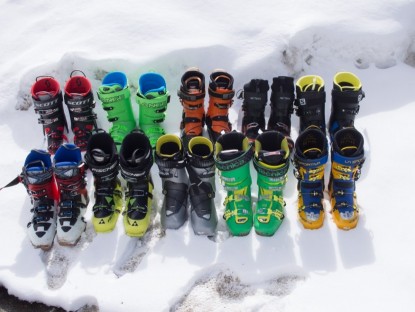
Our Verdict
Our Analysis and Test Results
We have long loved the Dynafit TLT series of boots. In many ways, Dynafit invented the “speed touring” boot category 15 years ago with the TLT 5. One of our testers remembers the TLT 6 as his favorite touring ski boot ever. Even if memory is fraught and nostalgia is unreliable, the TLT X reminds us of those early models, in a good way. The form is simple and familiar, and the fit is neutral and balanced. There are also no other boots in its weight class that feature a “one move” up-down transition level – others may ski better, but they require a more complicated transition. This is the boot we recommend for all-around, weight-conscious, complex ski touring.
Downhill Performance
The TLT X skis downhill just like we expect a “one-kilogram” boot to ski. There are a few options out there that ski slightly within reasonable parameters of this weight range, but this boot is not far off that mark and excels in other ways, too.
The most telling test of the downhill mode of the Dynafit TLT X was a multi-day traverse of the entirety of the Sierra Nevada. Like many, we went to California after their historic 2023 ski season, but we experienced very little of the smooth “hero corn” that California is often known for. Even as the texture softened during some days, it remained very rough and very bumpy. We carried big packs and skied difficult, serious terrain. Thankfully, the stiffness and responsiveness of the TLT X are what got us through our mission.
Uphill Performance
In terms of cuff friction and range of motion, the Dynafit TLT X is in the mix with all but dedicated skimo race boots. The touring mode cuff range of motion, as tested in our repeatable, quantified fashion, is more than your ankles are capable of.
The resistance is very low within that range of motion, likely because there is no “ski mode” metal bar to add friction. After a brief break-in period, the rivets also hinge freely. The liner is soft and thin. The combination of these factors allows for easy maneuverability, whether touring, climbing in crampons, walking, or scrambling.
Weight
We can look at the weight of the Dynafit TLT X in a variety of ways. But no matter how we slice it, this boot is lightweight and competitive with anything in the 1-kilogram range that skis downhill with the same level of performance. Availability has been steadily increasing for boot models with a single boot weighing within 100 grams or so of 1 kilogram. The downhill performance standard in that weight category has also been steadily increasing as new designs continue to drive innovation.
Straight out of the box – including the boot, liner, power strap, and no insole – one of our size-26.5 TLT X boots weighs 1057 grams. Strip the power strap (as we often do with lightweight boots), and you save about 50 grams. Of that mass, 190 grams are in the liner. You won't save any real weight by changing the liner of the TLT X; 190 grams is close enough to the bare minimum of a thin boot liner weight.
Comfort and Fit
Our test team unanimously labeled the Dynafit TLT X as a “neutral” fit that should accommodate most foot shapes. It isn't extra wide (as recent TLT predecessors were), nor is it extra narrow (as the TLT 5 was). The toe box is roomy enough to wiggle your toes in, but not so roomy that your forefoot floats around. The heel cup holds well without digging in any particular spot.
The thin liner, flexy downhill performance, and light shell materials necessitate a close fit. While this advice is really the same for all lightweight “1-kilo” ski boots – heck, all ski boots – we recommend that you pay close attention as you fit your TLT X boots to ensure that they are, in fact, a good fit for your foot. But their accessible, neutral shape means that the TLT X is likely a good starting point on your search for lightweight ski boots.
Warmth
No lightweight ski boots are especially warm. The same minimalist approach to materials that yields the free-wheeling uphill experience yields a minimal amount of insulation. The Dynafit TLT X feels comparable, if maybe slightly warmer, than other, similar 1-kilo ski boots.
Step up a couple hundred grams, and you will find thicker boots that are noticeably warmer and offer noticeably better downhill performance. But as with most things in the realm of backcountry ski gear, the trade-off will be a significant drop in uphill efficiency.
Ease of Use
This is why the Dynafit TLT X wins an award. Dynafit's lightweight cuff lock lever solution is the best in the business. That one lever locks the cuff and cinches around your ankle. While there are other, similar solutions out there, they are mostly fading in popularity, which is a bit strange to us. It isn't that hard to accomplish, as evidenced by decades of this technology in the TLT family. Not to mention, of course, the entire skimo race category of boots. We love it when our lightweight boots have a “one-move” ski-walk mode lever – we wish this technology existed on all ski boots.
But not everyone likes the knob-and-cable style of forefoot closure on the TLT X. Other ski companies that experimented earlier with the crank-style closures have since gone back to more traditional buckles on the lower portion of their lightweight ski boots. In our extensive experience with the two most popular closure modes, we've derived very few strong feelings on the matter. Both tighten a ski boot, and both are vulnerable to failure. The biggest difference we consider is that the cable and knob styles are more difficult to repair in the field. But in the case of catastrophic gear failure, there's always the ubiquitous fix of slapping a ski strap on it.
Should You Buy the Dynafit TLT X?
Yes, and we give the TLT X an award for a reason. Many skiers do a lot of skiing in terrain, conditions, and circumstances that are perfect for a 1-kilo boot. And many modern backcountry skiers, for one reason or another, have come to appreciate the easy transition that a “one-move” ski-walk mode facilitates. If you want lightweight touring boots that ski well and are even easier to transition, this is the best option on the market.
What Other Backcountry Ski Boots Should You Consider?
The Salomon S/Lab MTN Summit, and Tecnica Zero G Peak Carbon weigh the same as the TLT X, tour the same, but ski downhill better. However, these boots don't offer the ease of the one-move transition. As we've mentioned time and again, there's always a tradeoff in the world of backcountry skiing.
| Awards | Top Pick for Fast and Light Missions |
|---|---|
| Price | $800 List Check Backcountry (on sale!) |
Overall Score  |
|
| Star Rating | |
| Bottom Line | A lightweight, all-around backcountry ski boot with a function that enables fast and smooth transitions |
| Pros | Lightweight, balanced, neutral fit, one-move transitions |
| Cons | Mediocre downhill performance for weight, minimalist warmth |
| Rating Categories | Dynafit TLT X |
| Downhill Performance (35%) | |
| Uphill Performance (20%) | |
| Weight (20%) | |
| Comfort and Fit (10%) | |
| Warmth (10%) | |
| Ease of Use (5%) | |
| Specifications | Dynafit TLT X |
| Weight per Pair (Size 26.5) | 4 lbs 11 oz |
| Binding Compatibility? | Tech only |
| Measured Range of Motion (degrees) | 65° |
| Manufacturer Stated Last Width | 101 mm |
| Weight of One Complete Boot, No Insole | 1057 g |
| Weight of One Boot Shell | 867 g |
| Weight of One Stock Liner, No Footbed | 190 g |
| Stated Flex Index | Not Listed |
| Liner Design | Tongue |
| Shell Material | Grilamid |


